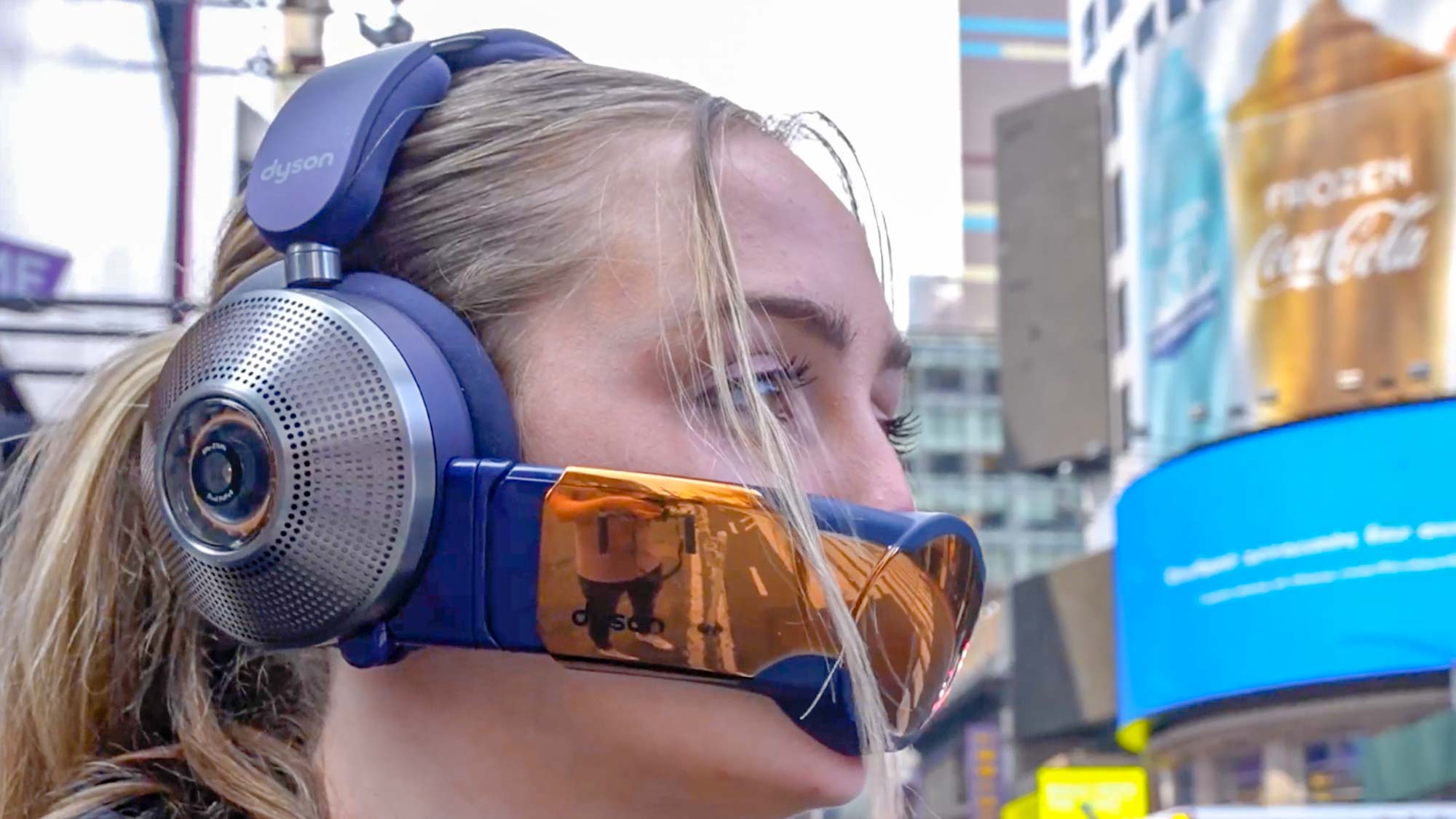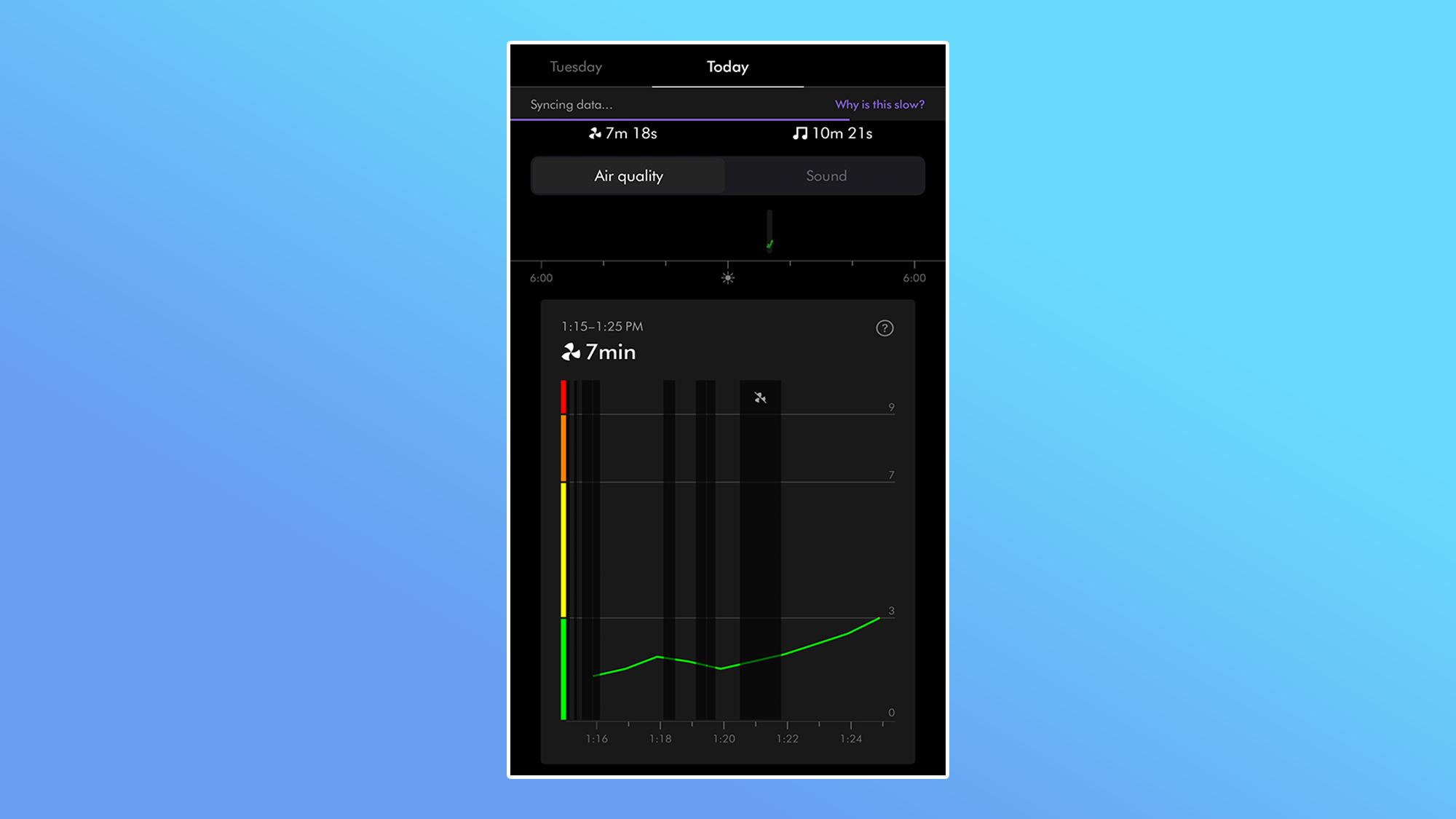I had high hopes for the Dyson Zone, the air-purifying and noise-canceling headphones that look like they were stolen off a cyborg-like supervillain. But after wearing and traveling with the contraption, it’s not quite as practical for everyday use as I expected. In fact, it came in handy most during an unprecedented, apocalyptic-like bout of air pollution caused by wildfire smoke.
First announced in 2022, the Dyson Zone arrived well after the peak of the pandemic. Mask mandates had eased up and, in general, people were out and about in the world again. Still, the product came out specifically saying that it’s not for airborne viruses. Instead it promised a futuristic experience of having air pollution filtered out for commuters. Plus, the noise-canceling headphones aspect of it meant that you could also filter out sound.
And while the audio performance is impressive coming from a company known for premium air purifiers, vacuum cleaners and hair-styling tools, it’s probably not enough to justify the Dyson Zone’s starting $950 price tag for most people. Comfort and good battery life are essential to the best headphones, but this Dyson Zone review will explain why they feel like an afterthought with the wearable filtration system (admittedly, an impressive engineering feat) stealing the show.
Dyson Zone: Price and availability
The Dyson Zone is available now in two configurations. The entry-level bundle, featuring a silver visor, costs $950 and comes with a hard case, visor sleeve, visor cleaning brush and a spare set of electrostatic carbon filters.
I tested the higher-end bundle, featuring a copper visor. It costs $999 and comes with a purse-like carrying case instead of a standard hard case, as well as a flight-adapter kit. Both models sport the same audio and air-filtration systems, so they offer the same performance.
Dyson Zone review: Design
I’ve heard the Dyson Zone design compared to the mask worn by Batman foe Bane, a Transformer faceplate, and something Tony Stark built in his lab. As much as the device feels pulled from science fiction, I happen to think it looks like, well, a Dyson product.

But adapting the Dyson design language to a pair of headphones might not have been the best move. With the visor, the headset weighs a hefty 1.47 pounds. That’s a lot to carry on my head and to walk around with. Both the AirPods Max and Sony WH-1000XM5 are well under a pound for comparison, so I do think these are just too heavy. I respect that it needs to accommodate the air purifiers, but at what cost to comfort?

What’s more, the materials on the headphones itself actually look very premium, but by contrast, the visor seems cheap. It’s mostly plastic, and looks like it could snap if bent the wrong way. Plus, it attracts fingerprints and makes a lot of clicky noises.

The safest way to carry the headset around is with a purse-like carrying case included with the $1,000 bundle. For city-living, I love a functional bag. I could even fit my phone and wallet inside along with the headset. I’m not sure Dyson navy is my color, but I think I made it work during this review period.
Dyson Zone review: Performance
When wearing the Dyson Zone and visor, it felt like getting a direct oxygen line — it’s honestly a nice sensation. If I were to start moving around or running to catch a subway with the headset set to Auto mode, it’ll even kick up the amount of air being pushed through the visor. Otherwise it has three airflow settings that can be adjusted either in the companion Dyson app or directly on the headset.

The Dyson Zone also has an easy filter installation and replacement system, and comes with an extra set of filters in the packaging. Plus, the app tells you when your filters need to be replaced, so there’s no guessing involved.

The app is also how you see the air quality around you, both in your location and actually what the headset is picking up around it. It specifically reads the level of nitrogen dioxide, which gets into air from burning fuel, so places with a lot of buildings or industrial parks or big trucks and buses, even just a ton of cars in traffic. Most places in NYC I wore the headset didn’t register concerning levels of pollutants on the average day, so unless I just wanted to feel the airflow, I didn’t find it necessary to wear. Mind you, I don’t have any kind of breathing conditions, such as asthma.

It wasn’t until wildfire smoke wafted over the city that the Dyson app warned me of an unhealthy AQI, and I felt glad to still have the review unit in my possession. While this let me know I should try to avoid time spent outside, I did want to see how the Dyson Zone fared with air filtration. Since the headset can capture 99% of particles as small as 0.1 microns that pass through the filters, it meant that at least some of the air pollution should be filtered out. It might not have the seal offered by a KN95, but it’s certainly better than nothing.
Dyson Zone review: Battery life
Continuous air flow poses a major setback, though. With the whole operation running, the Dyson Zone only lasts about two hours on a full charge. That means on a 6-hour flight, I needed to keep them plugged into an outlet most of the time. Luckily on my commute back home, I could get through both morning and evening trips, but I still had to charge them every night.
Without using the visor, I could listen to music with active noise cancellation for much longer, past 10 hours in my experience. It’s still not as long-lasting as the Sony WH-1000XM5 I normally use for travel, those have over 30 hours of battery life.
Dyson Zone review: Audio performance
In some ways, the whole visor-filtration situation undermines the audio performance of the Dyson Zone. As the company’s first true audio product, it’s actually very good. Is it better than headphones that are half the price (or less)? No, but it’s on par with some of the best noise cancelling headphones you can buy right now.

Listening to Billie Eilish’s “Bad Guy,” the Zone delivered a huge beat drop with stronger bass than I expected. The synths and Eilish’s whispery vocals layered beautifully, creating that in-studio feel I look for when I test headphones.
The Dyson Zone’s active noise cancellation is strong, too. On the airplane, I couldn’t hear crying babies or beverage service taking place while listening to shows and music. Outside, the sirens from emergency vehicles I regularly hear and see on my commute sounded much less blaring. I liked how I could see live sound data in the Dyson app to get a sense of my daily exposure as well. No surprise, in the city it’s quite high, telling me I might want to use ANC more often to protect my ear health.
Dyson Zone review: Verdict
I had higher hopes for the Dyson Zone. As I began testing for this Dyson Zone review, I felt so cool and futuristic. But I quickly realized that it lacks enough practically to justify the high price. On a day-to-day basis, I didn’t find the air purification all that useful, and the heft doesn’t make them the most comfortable over-ear headphones, either.

That said, if you do actually have a situation where you think or know that your health is harmed by air pollutants, the Dyson Zone could be a smart contraption to own. I was sure glad to have it when the wildfire smoke blanketed New York City, and I do know that there are areas that experience this kind of air pollution on a more regular basis. To that point, the Zone might not be a device that you hope to have to use, but one you might be glad to have in certain situations.
However, If you ask me, the answer is greater action against air pollution and burning fossil fuels, so that we don’t get to the point of needing to breathe through something like the Dyson Zone in the first place.
For all the latest Technology News Click Here
For the latest news and updates, follow us on Google News.
